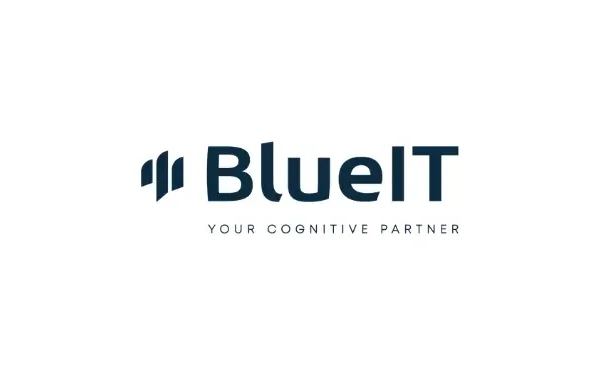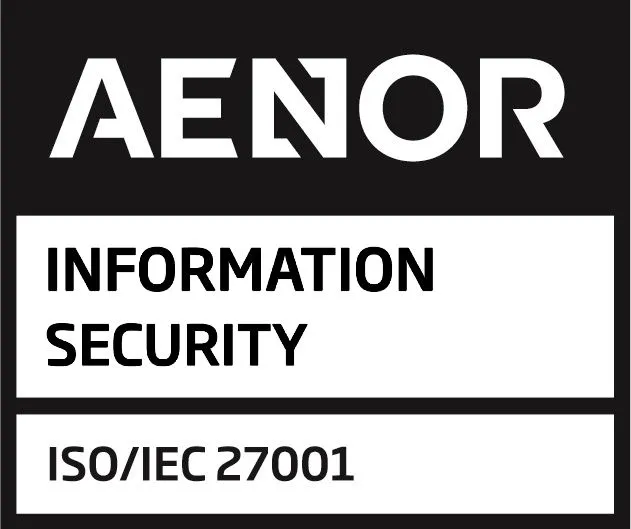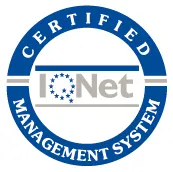
Efforts to improve employee wellbeing are now a strategic necessity, not just a bonus: it is a necessity. And it is not enough to just throw in random benefits. What really makes a difference are actions that are thoughtful, adaptable and consistent with what people need at work today.
The challenge is to get it right: to make it work for those who are remote, in the office or on the shop floor; to make it easy to implement; and to be able to tell if it is having an effect. In this article you will find 13 practical actions, divided by type of wellbeing, with clear examples, ways to implement them. It also includes a special focus on how to prevent burnout, one of the main threats to engagement and productivity. A guide designed to inspire, but above all, to act.
Table of Contents
Design a wellbeing strategy aligned with the corporate culture
Before implementing actions, it’s essential to define a clear strategy to improve employee wellbeing. Not all companies are the same, and what works in a start-up may not make sense in a factory with rotating shifts.
The first step is to make a diagnosis: ask, observe, understand what is really going on. What do people value? What frustrates them? Where do they feel neglected? Internal surveys, focus groups or individual interviews are the ideal tools to listen to your employees.
With all the information, you can prioritise actions according to the type of company, size or maturity of the HR area.
For example, a tech startup might focus on flexible working hours and career development, while an industrial company might prioritise physical health, stress prevention or achievement recognition.
Involving leaders and managers from the start helps a lot: they are the ones who know the day-to-day and can facilitate implementation. The important thing is that the actions are not ‘one-offs’, but part of a plan with clear objectives and room for testing, adjusting and improving.
Designing this roadmap not only generates greater impact, but also makes it easier to measure results and scale initiatives over time.

13 concrete actions to improve employee wellbeing
Here is a selection of initiatives that will help you improve employee wellbeing in different aspects. They are designed for different profiles, resource levels and work formats. With this selection you will be able to build a solid plan of wellbeing at work that impacts on physical, emotional, social and organisational aspects.
Emotional and psychological wellbeing
1. Offer accessible psychological support
Having psychologists or coaches available, inside or outside the company, is a way of creating listening spaces. On the other hand, workshops on stress, emotional intelligence or resilience can help prevent and help identify possible crises such as burnout. It is a real investment in mental health
2. Promote real days of disconnection
Allow employees to disconnect completely on certain days of the month (no meetings or emails). This sends a clear message: taking care of your mind is part of the job.
3. Recognise on time and with purpose
Recognition does have an impact on the emotional state, whether by the manager or by colleagues. Implementing a recognition programme with awards or peer recognition definitely generates meaning and connection. There is no discouragement that cannot be broken with a ‘Congratulations! or a ’Thank you for your help”.
Physical wellbeing
4. Encourage daily movement
Organise healthy challenges such as ‘steps a month’, online yoga classes or agreements with gyms. And if you have a discount club for employees, with discounts on sports, health, healthy eating, etc., you make it even easier for your employees.
5. Comfortable spaces to work or rest
Ensure that both on-site and remote employees have the right tools: ergonomic chairs, comfortable workstations, rest areas.
6. Scheduled active breaks
Breathe, stretch, move. Include 5-minute guided breaks with guided exercises or breathing to reduce accumulated fatigue.

Social and cultural wellbeing
7. Team activities that connect
Not everything is ‘formal team building’. A shared breakfast, a solidarity challenge, online games, social or cultural hybrid actions also count. They are key to generating a sense of belonging.
8. Promote a culture of inclusion and diversity
Applying clear policies of respect and representation helps to create a safer and more open working environment. It is not enough to say it: it must be shown in the processes, in the teams, in the day-to-day.
9. Foster quality relationships between colleagues
One of the keys to improve employee wellbeing lies in how people feel at work. Creating spaces to get to know each other beyond the tasks – such as presentation dynamics, cross-mentoring, or coffee chats between areas – can strengthen trust, reduce tensions and improve the overall atmosphere.
Organisational wellbeing
10. Real flexibility in working hours and workplace
Beyond teleworking, allowing adaptations according to personal productivity cycles or family responsibilities has a direct impact on wellbeing. This was one of the lessons of the Covid-19 pandemic.
11. Professional development and continuous learning
Training, mentoring or internal promotions show commitment to individual growth. If people see a future, they stay.
12. Constant listening
Create short surveys, mailboxes (even anonymous), regular check-ins and spaces where feedback is not left up in the air. You’ll be able to detect tensions before they escalate. And you’ll be grateful for it.
13. Celebrate milestones and collective achievements
Marking milestones with symbolic actions or virtual/hybrid celebrations reinforces collective motivation.

Improve employee wellbeing: the real antidote to burnout
Burnout doesn’t happen overnight. It accumulates. According to Gallup, 76% of workers report having experienced it at least once. The WHO classifies it as a work-related phenomenon that impacts on mental health, productivity and corporate culture. It affects both office-based and remote or frontline employees, and is often progressive if not detected early.
What causes it?
Among the most common causes are:
- Constant overload of tasks without real breaks.
- Lack of autonomy or control over one’s own time
- Lack of purpose or recognition
- Poor communication or a toxic environment
- Feeling of isolation in remote or hybrid teams
How to detect it?
- Persistent demotivation and cynicism
- Sudden drop in performance
- Irritability or defensive attitudes
- Increased absenteeism or micro-leavers (emotional disconnection)
- Recurrent physical complaints (headache, fatigue, insomnia)
What to do?
1. Implement ‘disconnection rituals’ in the workday
Small guided breaks, reminder notices to log out or establishing a ‘meeting-free zone’ (e.g. Friday afternoons) help reduce the mental load that builds up.
2. Offer accessible and stigma-free emotional support
Create a direct channel to psychologists, stress management workshops, or confidential listening spaces. Incorporating these resources on your corporate intranet reinforces their use.
3. Promote frequent and visible recognition
Whether through daily feedback or recognition programmes, acknowledging achievements (big or small) helps employees feel that their efforts matter.
4. Encourage autonomy in the organisation of time
Instead of controlling hours, focus on objectives. Giving freedom to manage tasks and schedules minimises the feeling of overload and reinforces commitment.
5. Measure the ‘emotional pulse’ on a recurring basis
Short surveys, weekly check-ins or anonymous thermometers can detect tensions. But measuring without taking action has the opposite effect: it is crucial to close the cycle with concrete improvement plans.
These actions not only prevent burnout: they build an organisational culture where wellbeing is real, not decorative.

Design a wellbeing plan that works for everyone
Not all wellbeing initiatives work the same for everyone. One of the keys to success is to tailor your plan to suit your workforce, working environment (remote, hybrid, on-site) and sector. Here’s how to fine-tune your actions for greater impact.
1. Remote employees
Challenges: isolation, disconnection from the team, blurred separation between work and personal life.
What to do?
- Emotional connection rituals: such as virtual coffees, short non-work meetings or online gamification activities.
- Immediate digital recognition: platforms such as Vip Incentives allow remote recognition of achievements.
- Radical flexibility: let the employee decide when and how to complete certain tasks.
2. Face-to-face teams (offices or factories)
Challenges: repetitive routines, less autonomy, physical or emotional fatigue.
What to do?
- Active breaks in the workplace: short guided sessions or equipped ‘breathing zones’.
- Visible wellbeing actions: Posters with positive messages, recognition murals, physical access to benefits.
- Milestone celebrations: small events, team breakfasts or symbolic actions on site reinforce the sense of belonging.
3. Front-line staff (customer service, logistics, retail)
Challenges: high physical demands, pressure for results, direct exposure to users/customers.
What to do?
- Shifts designed for wellbeing: allow micro-breaks and avoid long consecutive shifts.
- Targeted emotional support: offer help after stressful events or conflict situations.
- Accessible benefits outside working hours: discounts, weekend activities, recognition awards.
Engage, recognize, and retain — all in one smart points reward platform.
How to measure the impact of workplace wellbeing actions
No matter how much you implement actions to improve the wellbeing of your team, if you don’t measure, you won’t know if it’s working. But it’s not all about counting numbers: the important thing is to understand how people feel and how that influences the business.
What should you measure?
1. Business indicators: show the direct impact of wellbeing on the business.
- Turnover: a sustained reduction can indicate greater satisfaction and engagement. Calculate your turnover rate here, and we’ll tell you how to tell if it’s a good result, or not.
- Absenteeism rate: days lost due to stress, anxiety or work-related illness.
- Level of productivity and achievement of objectives: especially in areas with a high level of emotional exhaustion.
2. Human indicators: qualitative and quantitative evaluations that will help you know how employees feel.
- Perceived wellbeing index: through monthly or quarterly pulse surveys.
- Internal Net Promoter Score (eNPS): measures the willingness of employees to recommend the company as a good place to work.
- Recognition index: frequency and type of perceived recognition.
How to do it?
- Short, regular surveys
- Qualitative feedback in focus groups
- Dashboards that connect climate with results
- And most importantly: do something with the data. If you ask, answer. If you measure, act.
Far from being a trend, efforts to improve employee wellbeing are key to business success. It is not necessary to make large investments, but rather to commit to specific, adaptable and sustained actions that respond to the real needs of each employee profile.
From simple initiatives such as active breaks or daily recognition, to structured programmes with personalised benefits, the key is to act consistently, measure the impact and communicate transparently.
If you are wondering where to start, choose two or three actions from this article, adapt them to your reality and commit to evaluating their effects.
The important thing is not to do everything, but to do what matters, well.
New to Vip District? Contact us and find out what our platform has to offer!








